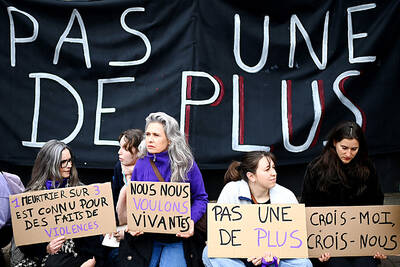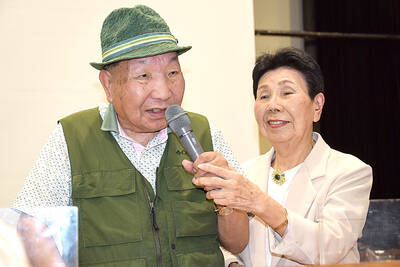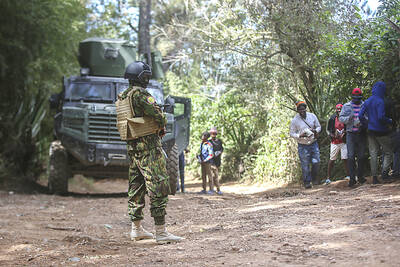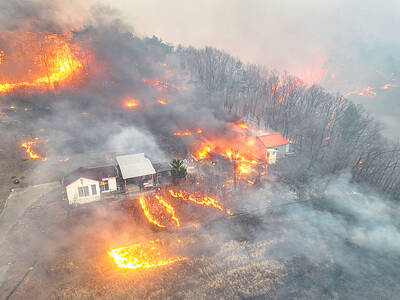Running ultra marathons that turn feet into blistered, bloody stumps. Nordic skiing in winter’s brutal cold.
Riding mountain bikes on rump-numbing trails across the grasslands of Inner Mongolia.
For many Chinese, these have long been things that only crazy foreigners do for fun. But that’s not so true anymore. The number of Chinese competing in such adventure sporting events has been growing rapidly in recent years as the country’s leisure-loving middle class continues to expand. Many companies are lining up to get a bigger piece of the market, while others see the trend as a new way to promote their products.
When the organizers of the North Face 100 began accepting applications for China’s first large-scale ultramarathon last year, they thought that most runners would opt for the 10km fun-run option, said Julia Cui, director of sports events at Octagon, the marketing company that promoted the event.
Only 100 slots were available for runners who wanted to do the grueling 101.5km race, which started at the Great Wall and went through the Ming Tombs outside Beijing last April, Cui said. The organizers were stunned when 300 people tried to sign up and had to be turned away from the race sponsored by US outdoor gear company The North Face.
“We didn’t realize that this would be so popular,” Cui said.
Octagon has seen a big spike in interest in other endurance events it organizes in China, like the marathon in the eastern city of Hangzhou.
“From 2006, there were only 5,000 people attending the race, but in 2009, there were 14,000,” Cui said. “So the increase was huge.”
For decades, those who did sports in China were mostly an elite few who were plucked out of school at young ages because they had the right physique or coordination for gymnastics, pingpong, diving or some other event. They spent their youth in the massive state-funded sports machine, while most other Chinese spent their lives in the fields, factories or pushing paper.
Sure, the late leader Mao Zedong (毛澤東) enjoyed swimming and his successor Deng Xiaoping (鄧小平) played tennis, but most Chinese were busy just struggling to make a living. Extra income was spent on food, clothing and other necessities — not US$90 trail running shoes that would get you through an ultramarathon.
But that’s changing as the ranks of China’s new middle class continue to swell. More people have the time and money for recreation and leisure sports serve as a good “filtering system” for companies who are trying to reach consumers with money to spend, said Chris Renner, president for China of sports marketing agency Helios Partners.
“If you do your consumer-based research, you’ll find that amazingly, unlike the United States, when you see people participating, doing walking, running, badminton, swimming, they’re all higher level income,” Renner said. “They’re higher level because they’re the only ones who have leisure time. The 800 million people working in the fields don’t have time for that and certainly the migrant workers don’t have time for that.”
Renner said the growth potential is enormous.
“We’re almost starting from scratch, honestly,” he said. “And I think there is an appetite as the virtuous cycle of more income, more education, more leisure time starts spinning itself.”
The Economist Intelligence Unit said in a report last October that China’s sports sponsorship market is worth about US$1.5 billion to US$2 billion — just a fraction of the global market of US$60 billion.
Although the state still dominates sports, the report said, commercialization is taking root. But much more development at the grass-roots level is needed, it said.
Daimon Ling is among the new class of white-collar fitness fanatics. The 31-year-old deputy general manager at a records management company in Guangzhou said that traditionally his peers liked to spend their leisure time playing mahjong. But more of them are getting into mountain biking and cycling on the roads.
“Ten years ago, there were no Web sites in China about cycling that we could go to for information,” said Ling, who rides an expensive carbon-fiber model produced by famed Italian bike maker Tommasini. “But now, there are about 10 of them that I check.”

A French-Algerian man went on trial in France on Monday for burning to death his wife in 2021, a case that shocked the public and sparked heavy criticism of police for failing to take adequate measures to protect her. Mounir Boutaa, now 48, stalked his Algerian-born wife Chahinez Daoud following their separation, and even bought a van he parked outside her house near Bordeaux in southwestern France, which he used to watch her without being detected. On May 4, 2021, he attacked her in the street, shot her in both legs, poured gasoline on her and set her on fire. A neighbor hearing

DEATH CONSTANTLY LOOMING: Decades of detention took a major toll on Iwao Hakamada’s mental health, his lawyers describing him as ‘living in a world of fantasy’ A Japanese man wrongly convicted of murder who was the world’s longest-serving death row inmate has been awarded US$1.44 million in compensation, an official said yesterday. The payout represents ¥12,500 (US$83) for each day of the more than four decades that Iwao Hakamada spent in detention, most of it on death row when each day could have been his last. It is a record for compensation of this kind, Japanese media said. The former boxer, now 89, was exonerated last year of a 1966 quadruple murder after a tireless campaign by his sister and others. The case sparked scrutiny of the justice system in

DITCH TACTICS: Kenyan officers were on their way to rescue Haitian police stuck in a ditch suspected to have been deliberately dug by Haitian gang members A Kenyan policeman deployed in Haiti has gone missing after violent gangs attacked a group of officers on a rescue mission, a UN-backed multinational security mission said in a statement yesterday. The Kenyan officers on Tuesday were on their way to rescue Haitian police stuck in a ditch “suspected to have been deliberately dug by gangs,” the statement said, adding that “specialized teams have been deployed” to search for the missing officer. Local media outlets in Haiti reported that the officer had been killed and videos of a lifeless man clothed in Kenyan uniform were shared on social media. Gang violence has left

‘HUMAN NEGLIGENCE’: The fire is believed to have been caused by someone who was visiting an ancestral grave and accidentally started the blaze, the acting president said Deadly wildfires in South Korea worsened overnight, officials said yesterday, as dry, windy weather hampered efforts to contain one of the nation’s worst-ever fire outbreaks. More than a dozen different blazes broke out over the weekend, with Acting South Korean Interior and Safety Minister Ko Ki-dong reporting thousands of hectares burned and four people killed. “The wildfires have so far affected about 14,694 hectares, with damage continuing to grow,” Ko said. The extent of damage would make the fires collectively the third-largest in South Korea’s history. The largest was an April 2000 blaze that scorched 23,913 hectares across the east coast. More than 3,000